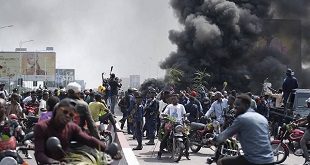
Hoima, Uganda | THE INDEPENDENT | Several Wetlands in Hoima City are under threat from the unregulated disposal of plastic waste. The waste in the city is left uncollected and ends up in drainage channels and wetlands. In some places, the plastic waste is left to decompose on its own.
The affected wetlands include Bigajuka, Rwenkondwa, Kibati and Wambabya where plastic bottles and bags are dumped.
Paul Bakwata, a resident of Kijungu cell in Hoima East Division says that they have repeatedly asked the area leaders to put in place a garbage dumping site, in vain.
Jennifer Karungi, a resident of Kinube cell in Hoima East Division says Hoima City garbage trucks take long to collect garbage in their area forcing the residents to misuse and contaminate Rwenkondwa wetland.
Vincent Nyegenya, the Executive Director Network of Sound Management of Chemicals Kitara-NESMAC-Kitara wants the authorities to immediately acquire incinerators or invest in the plastic waste recycling industry.
Ronald Kyamanywa, the Hoima City Environment officer blames residents for failing to separate plastics from bio-degradable waste.
Kyamanywa on the other hand faults the garbage collectors for gaps in the collection and dumping of plastics at Kibati waste management plant where plastic materials are supposed to be sorted from other solid waste used to manufacture manure.
Jimmex Businge, the Hoima City Deputy Mayor says the garbage collection trucks broke down and they lack funds to repair them.
He, however, says that the city is yet to come up with a plastic waste management plan.
According to study by the Global Water partnership in East Africa, plastics take not less than 400 years to decompose.
********
URN
 The Independent Uganda: You get the Truth we Pay the Price
The Independent Uganda: You get the Truth we Pay the Price


